Related Research Articles

Deerfield is a town in Franklin County, Massachusetts, United States. Settled near the Connecticut River in the 17th century during the colonial era, the population was 5,090 as of the 2020 census. Deerfield is part of the Springfield, Massachusetts Metropolitan Statistical Area in western Massachusetts, lying 30 miles (48 km) north of the city of Springfield.

The Pioneer Valley is the colloquial and promotional name for the portion of the Connecticut River Valley that is in Massachusetts in the United States. It is generally taken to comprise the three counties of Hampden, Hampshire, and Franklin. The lower Pioneer Valley corresponds to the Springfield, Massachusetts metropolitan area, the region's urban center, and the seat of Hampden County. The upper Pioneer Valley region includes the smaller cities of Northampton and Greenfield, the county seats of Hampshire and Franklin counties, respectively.

Historic Deerfield is a museum dedicated to the heritage and preservation of Deerfield, Massachusetts, and history of the Connecticut River Valley. Its historic houses, museums, and programs provide visitors with an understanding of New England's historic villages and countryside. It is located in the village of Old Deerfield which has been designated a National Historic Landmark District, and is listed on the National Register of Historic Places. The museum also hosts the Dublin Seminar for New England Folklife.

The Raid on Deerfield, also known as the Deerfield Massacre, occurred during Queen Anne's War on February 29, 1704, when French and Native American raiders under the command of Jean-Baptiste Hertel de Rouville attacked the English colonial settlement of Deerfield, Massachusetts, just before dawn. They burned parts of the town and killed 47 colonists. The raiders left with 112 colonists as captives, whom they took overland the nearly 300 miles to Montreal; some died or were killed along the way because they were unable keep up. Roughly 60 colonists were later ransomed by their associates, while others were adopted by Mohawk families at Kahnawake and became assimilated into the tribe. In this period, English colonists and their Indian allies were involved in similar raids against French villages along the northern area between the spheres of influence.

The Pocumtuc were a Native American tribe historically inhabiting western areas of Massachusetts.

The Peabody Museum of Archaeology and Ethnology is a museum affiliated with Harvard University in Cambridge, Massachusetts. Founded in 1866, the Peabody Museum is one of the oldest and largest museums focusing on anthropological material, with particular focus on the ethnography and archaeology of the Americas. The museum is caretaker to over 1.2 million objects, some 900 feet (270 m) of documents, 2,000 maps and site plans, and approximately 500,000 photographs. The museum is located at Divinity Avenue on the Harvard University campus. The museum is one of the four Harvard Museums of Science and Culture open to the public.

George Sheldon (1818–1916) led one of the first historic preservation societies in the United States.
Eunice Williams, also known as Marguerite Kanenstenhawi Arosen, was an English colonist taken captive by French and Mohawk warriors from Deerfield, Massachusetts in 1704. Taken to Canada with more than 100 other captives, the seven-year-old girl was adopted by a recently converted Mohawk family at Kahnawake and fully assimilated into Mohawk society. She was baptized as the Catholic "Marguerite" and renamed A'ongonte, meaning "she who has been planted as an ash tree." She eventually married a Mohawk man, François-Xavier Arosen, having several children and remaining with the Mohawk for the rest of her life. While choosing not to return to her natal family, she, along with her children, repeatedly made the trek to Deerfield to visit with her Puritan siblings over the course of her life. Her father, Rev. John Williams and her brother Samuel made numerous efforts to ransom her to no avail. Moreover, they failed to persuade her to return to Massachusetts and her birth family.
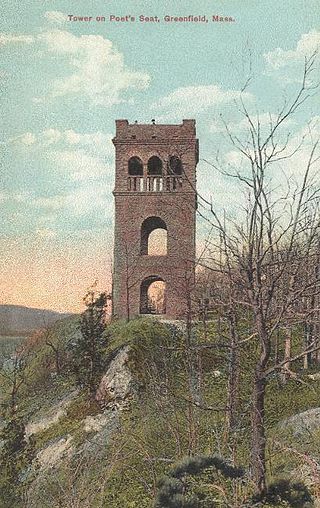
The Pocumtuck Range, also referred to as the Pocumtuck Ridge, is the northernmost subrange of the Metacomet Ridge mountain range of southern New England. Located in Franklin County, Massachusetts, between the Connecticut River and the Deerfield River valleys, the Pocumtuck Range is a popular hiking destination known for its continuous high cliffs, scenic vistas, and microclimate ecosystems.
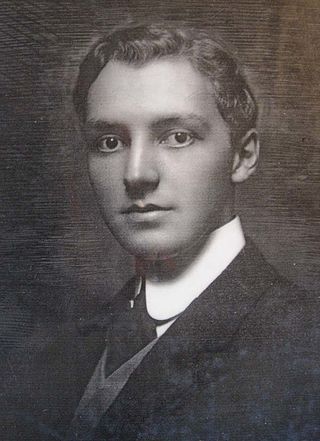
Henry Davis Sleeper was an American antiquarian, collector, and interior decorator best known for Beauport, his Gloucester, Massachusetts, country home that is "one of the most widely published houses of the twentieth century."

John Hooker Leavitt (1831–1906) was an early banker and Iowa state senator who was born at Heath, Massachusetts, but who later moved westward to Iowa in search of fortune.

The American Textile History Museum (ATHM), located in Lowell, Massachusetts, was founded as the Merrimack Valley Textile Museum (MVTM) in North Andover, Massachusetts in 1960 by Caroline Stevens Rogers. ATHM told America’s story through the art, science, and history of textiles. In June 2016, the museum closed.

Edwin Tryon Billings (1824-1893) or E.T. Billings was a portrait painter in 19th-century United States. He lived in Montgomery, Alabama; Worcester, Massachusetts; and in Boston. Among his numerous portrait subjects were Daniel Webster, William Lloyd Garrison and Oliver Wendell Holmes, Sr.
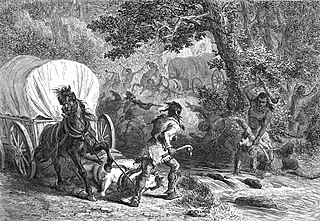
The Battle of Bloody Brook was fought on September 28, 1675 between an indigenous war party primarily composed of Pocumtuc warriors and other local indigenous people from the central Connecticut River valley, and the English colonial militia of the New England Confederation and their Mohegan allies during King Philip's War.

Freeman Clark Griswold was an American lawyer and politician who served as a member of the Massachusetts House of Representatives.

Jennie Maria Arms Sheldon was an American entomologist, educator, historian, author, and museum curator. She worked closely with zoologist Alpheus Hyatt at the Boston Society of Natural History, and she was the curator of the Memorial Hall Museum in Deerfield, Massachusetts, for a quarter of a century.

The Deerfield Society of Blue and White Needlework was founded in Deerfield, Massachusetts, in 1896 by Margaret C. Whiting and Ellen Miller. They formed the society in 1896 as a way to help residents boost the town's economy by reviving American needlework from the 1700s. It was inspired by the crewel embroidery of 18th-century women who had lived in the Deerfield, Massachusetts, area. Members of the Blue and White Society initially used the patterns and stitches from these earlier works, but because these new embroideries were not meant to replicate the earlier works, the embroidery soon deviated from the original versions with new patterns and stitches, and even the use of linen, rather than wool, thread. The society disbanded in 1926 for several reasons. Ellen Miller was in declining health; the trained stitchers were getting old and could not continue; Margaret C. Whiting's sight was fading; and, the design and quality of commercially produced items was increasing.
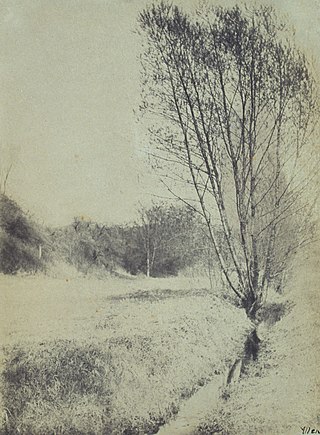
Mary Electa Allen (1858–1941) was an American photographer and co-founder of the Deerfield Society of Blue and White Needlework. She worked alongside her sister as a photographer from 1885 until 1920 capturing the life and landscape of Old Deerfield, among other subjects and paid commissions.
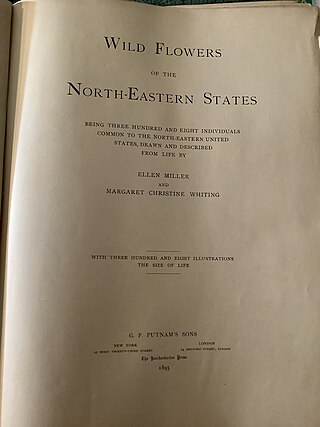
Margaret C. Whiting (1860-1946), was born in Chester, Massachusetts but lived much of her adult life in Deerfield, Massachusetts. She trained as an artist, and published an illustrated book with Ellen Miller on wild flowers. She ad Miller co-founded the Deerfield Society of Blue and White Needlework, where she contributed her skills as a designer and teacher, and provided leadership for the organization. She won a gold medal for her needlework from the 1915 Worlds Fair in San Francisco for its design and color.

George Mann Niedecken was an American prairie style furniture designer and interior architect from Milwaukee, Wisconsin. He is best known for his collaboration with the architect Frank Lloyd Wright. He also designed interiors for Marion Mahony Griffin who was one of the first female architects.
References
- 1 2 3 A Brief History of Deerfield Massachusetts. Old Deerfield, MA. 1972. pp. 23–24.
- ↑ Moonan, Wendy (2002-08-09). "ANTIQUES; Intrepid Sisters Whose Lenses Traced Memories". The New York Times. Retrieved 2020-10-17.
- ↑ Flynt, Suzanne L.; Kaplan, Wendy. Poetry to the earth : the arts & crafts movement in Deerfield. Deerfield. ISBN 978-1-55595-383-6. OCLC 857896280.
- ↑ "Memorial Hall Museum". PVMA Deerfield. Retrieved 2020-12-18.
- ↑ Cahill, Susan Elizabeth (2007). Crafting Culture, Fabricating Identity: Gender and Textiles in Limerick Lace, Clare Embroidery and the Deerfield Society of Blue and White Needlework (MA Thesis). Kingston, Ontario: Queen's University.
- ↑ Marker, Sherry (1978-07-23). "A Massachusetts Village Recalls A Bitter Night". The New York Times. Retrieved 2020-10-18.
- ↑ Moonan, Wendy (2004-02-27). "ANTIQUES; A Historic Raid, From All Sides". The New York Times. Retrieved 2020-10-18.